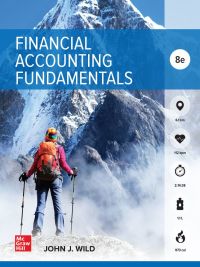Answered step by step
Verified Expert Solution
Question
1 Approved Answer
Match the correct descriptions to each of the three components of credit administration. Documentation Monitoring Re-classifying It involves undertaking regular reviews of a borrower's financial
- Match the correct descriptions to each of the three components of credit administration.
|
|
- Which of the following statements is NOT true about credit administration?
- Credit administration is important for identifying problems in a borrower's account and reducing the risk of credit default.
- Credit administration is about documentation, ongoing monitoring, and possibly re-classifying a borrower before a loan has been made.
- Appropriate credit administration and documentation practices allow for better information for more informed decision regarding actions taken towards a borrower's account.
- Proper credit documentation practices allow for more flexibility to respond to changes in a borrower's circumstances.
- Match the following credit documents into the appropriate categories.
|
|
- Which of the following is the correct order of documentation submission in the loan approval process?
- Loan application -> Term sheet -> Commitment letter -> Loan agreement
- Loan application -> Commitment letter -> Term sheet -> Loan agreement
- Loan application -> Term sheet -> Loan agreement -> Commitment letter
- Term sheet -> Loan application -> Commitment letter -> Loan agreement
- What is a term sheet?
- The formal contract between the borrower and creditor which includes all important information about the loan.
- A formal, legally binding document presented to the loan applicant to show intent to enter an agreement from both parties.
- The initial document required from the borrower when beginning the credit process, typically includes financial statements and a business plan.
- A non-binding agreement given to the borrower that summarizes primary terms including the interest rate, time to maturity, and security.
- What are covenants?
- The credit risk rating assigned to a borrower based on quantitative and qualitative measures.
- Assets or property pledged to a lender as protection in the case of default.
- Clauses in a loan agreement outlining what a borrower must maintain or what they are restricted from doing.
- The amount of the loan approved for a borrower as stated in a loan agreement.
- Which of the following are monitoring documents commonly provided by a borrower on a monthly or quarterly basis? Select all correct answers.
- Tax returns
- Commitment letter
- Unaudited financial statements
- Compliance certificates
- Match the following descriptions with each of the components in the loan review process
|
|
- Which of the following is NOT a reason to perform an annual review on a borrower?
- An annual review provides an opportunity to do a comprehensive re-assessment.
- An annual review gives a borrower a sense of general loan parameters such as the interest rate, time to maturity, and security.
- An annual review allows a lender to re-assess and meet a borrower's changing needs.
- An annual review helps a lender identify a borrower's business trends, early warning signs and mitigate credit risk.
- Which of the following activities will be performed during a security review?
- A re-assessment of borrower cash flows.
- A re-assessment of personal and corporate guarantors.
- A re-assessment of the corporate structure of the borrower.
- A re-assessment of the strategy and decision-making process of the borrower.
Step by Step Solution
There are 3 Steps involved in it
Step: 1

Get Instant Access to Expert-Tailored Solutions
See step-by-step solutions with expert insights and AI powered tools for academic success
Step: 2

Step: 3

Ace Your Homework with AI
Get the answers you need in no time with our AI-driven, step-by-step assistance
Get Started


